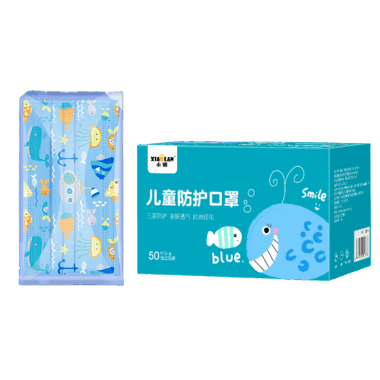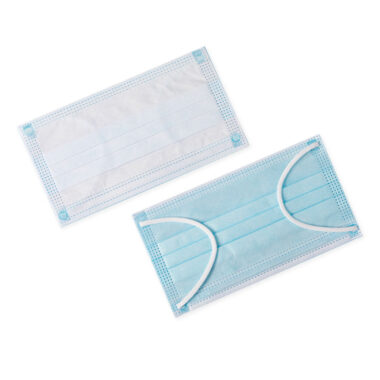For global buyers, understanding how a disposable face mask factory operates helps build confidence in quality and reliability. The process involves strict material sourcing, advanced machinery, and careful packaging before products are ready for shipment. By knowing what happens behind the scenes, wholesale customers can make smarter sourcing decisions.
🔹 1. Raw Material Selection
The quality of any mask begins with its raw materials. Disposable masks typically use three layers: spun-bond non-woven fabric, melt-blown fabric for filtration, and an inner comfort layer. Reliable suppliers purchase melt-blown cloth that meets international standards, as this determines filtration efficiency. Buyers should always confirm that their chosen factory secures certified and tested fabric supplies.
🔹 2. Fabric Cutting and Preparation
Once materials arrive, they are cut into precise shapes. Automated cutting machines ensure uniformity, which is vital for consistent protection and comfort. Earloop straps and nose bridges are also prepared at this stage. Precision matters here, since uneven cuts can affect mask sealing and lead to poor user experience.
🔹 3. Ultrasonic Welding and Layer Assembly
Disposable masks are not stitched like ordinary textiles. Instead, factories use ultrasonic welding machines to fuse layers together. This method ensures strong bonds without puncturing the material, maintaining proper filtration. During this step, earloops are attached, and nose bridges are inserted. Factories with multiple welding lines can increase daily capacity while maintaining product quality.
🔹 4. Quality Control During Production
Every professional face mask supplier integrates quality control checkpoints throughout production. Inspectors test random batches for earloop strength, filtration efficiency, and breathability. Machines may also have built-in monitoring systems to detect irregularities. Buyers should confirm that their supplier provides inspection reports as part of the production process.
🔹 5. Sterilization and Clean Handling
For medical-grade disposable masks, sterilization is a required step. Factories may use ethylene oxide or UV sterilization chambers to ensure masks are safe for use. Production areas should also be dust-free and managed under clean-room conditions. These measures reduce the risk of contamination, which is especially critical for hospital orders.
🔹 6. Packaging and Branding
Packaging is where custom options come into play. Disposable masks may be packed in polybags, dispenser boxes, or branded cartons depending on the buyer’s request. A custom mask manufacturing service allows clients to add logos, printed designs, and private-label packaging. Proper packaging also protects masks during shipping and makes them more appealing in retail environments.
🔹 7. Bulk Storage and Logistics Preparation
Once packaged, masks are stored in climate-controlled warehouses to protect them from moisture and dust. Factories prepare bulk cartons and pallets based on export requirements. Efficient storage and labeling simplify customs clearance and reduce logistics delays. Buyers should ask how suppliers manage their warehousing and inventory for large-scale shipments.
🔹 8. Final Shipment to Buyers
The last stage is delivery. Depending on the order size and urgency, masks are shipped by air, sea, or express courier. A reliable factory provides clear shipping documentation, including invoices, packing lists, and certificates. Good suppliers also work with freight forwarders to ensure smooth global deliveries.
✅ Conclusion
From raw material sourcing to final packaging, the disposable face mask factory process is built on precision and compliance. Buyers who understand these steps can better evaluate potential partners and avoid unreliable suppliers. When sourcing wholesale masks, always look for factories that prioritize certified materials, automated production, and strict quality control. This ensures that every mask not only meets protective standards but also reflects your brand’s commitment to safety and reliability.















